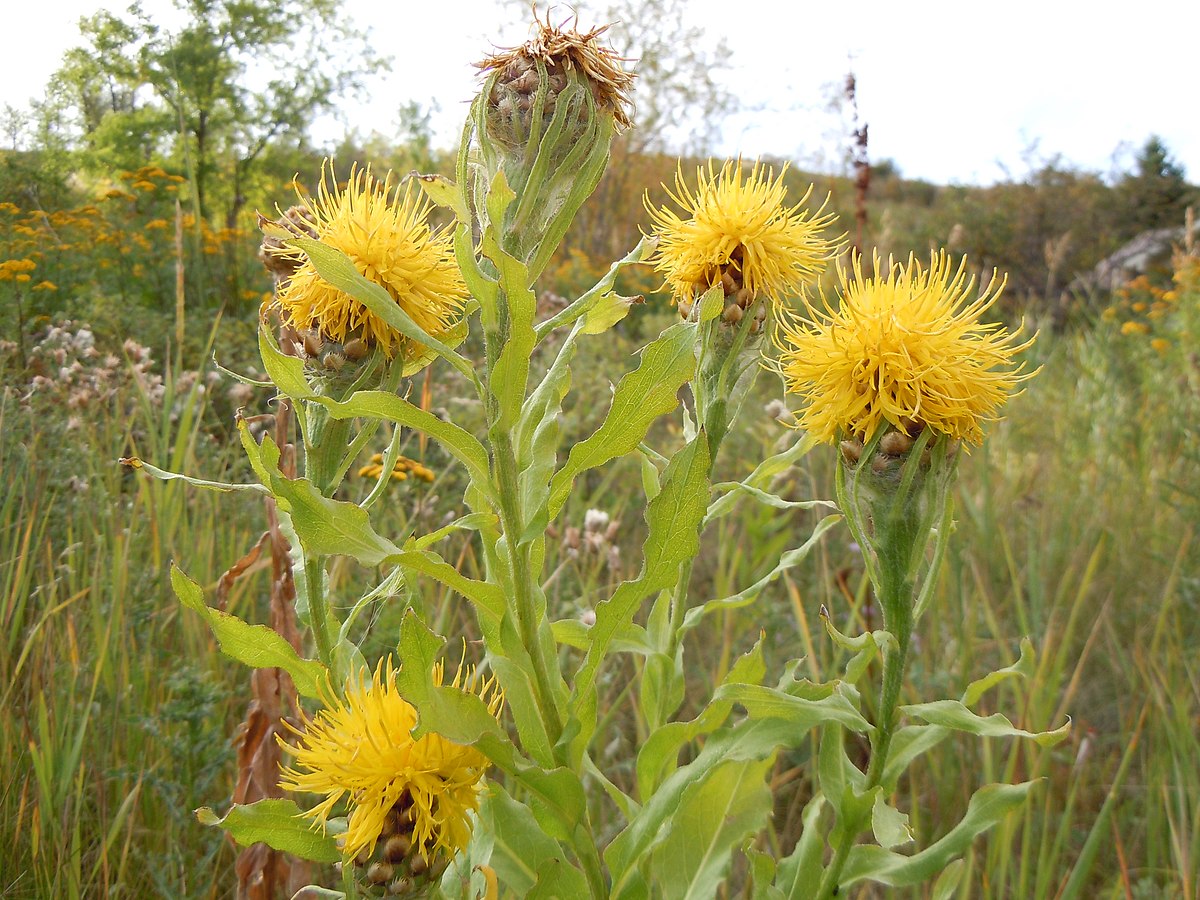Bighead Knapweed

Bighead Knapweed
(Centaurea macrocephala)
Priority: - Prevent / EDRR
Tags: Agricultural | Terrestrial
Identification and Reproduction
Identification:
- Bighead knapweed is a long-lived perennial that grows up to 1.7 m tall.
- The stems grow upright and are slightly branched near the tips.
- Leaves are lance-shaped, undulating and pointed to the tip. Edges can appear toothed or smooth.
- The stems and leaves are both covered in short soft hairs.
- Flowers are bright yellow and encased in light green or tan bracts, flowering from July thorugh September. Flowers grow in a globular shape and can reach a diameter of 7.5 cm.
- As it matures the taproot will become woody.
Reproduction:
- This plant reproduces by seed but can be propagated by dividing the crownheads.
- Seeds are too heavy to be dispersed by wind but can be transported by clinging to animal fur or clothing.
- Each individual flowerhead can produce 200 seeds.
Habitat & Ecology
- Bighead knapweed thrives in moist, well drained soils.
- It invades disturbed sites that are exposed to full sun.
- This plant is drought and frost resistant.
Impacts
Social:
- If growing in large infestations will limit human and livestock mobility.
- Displaces native grass and foraging species.
- Reduces forage availabilty for livestock.
Ecological:
- Displaces native vegetation.
Management
Prevention is a high priority for this plant.
- As a frequent garden escaper, refrain from planting.
- Do not purchase.
- If found in flower arrangements do not compost plant parts. Bag and throw materials in the garbage for disposal.
Mechanical/Manual Control:
- Hand-pulling for small patches is effective as long as entire roots are removed.
- Repeated mowing, cutting or pulling prior to seed set will help reduce spread and drain root reserves. Repeat for at least 3 growing seasons.
- Tilling or cultivation where at least 4 cm of the soil is disturbed to bury seeds and uproot plants.
Resources
Download the Invasive Species Council of BC's Factsheet on Bighead Knapweed here.
Download the Alberta Invasie Species Council's Factsheet on Bighead Knapweed here.
Header photo (Dwight Sipler).



